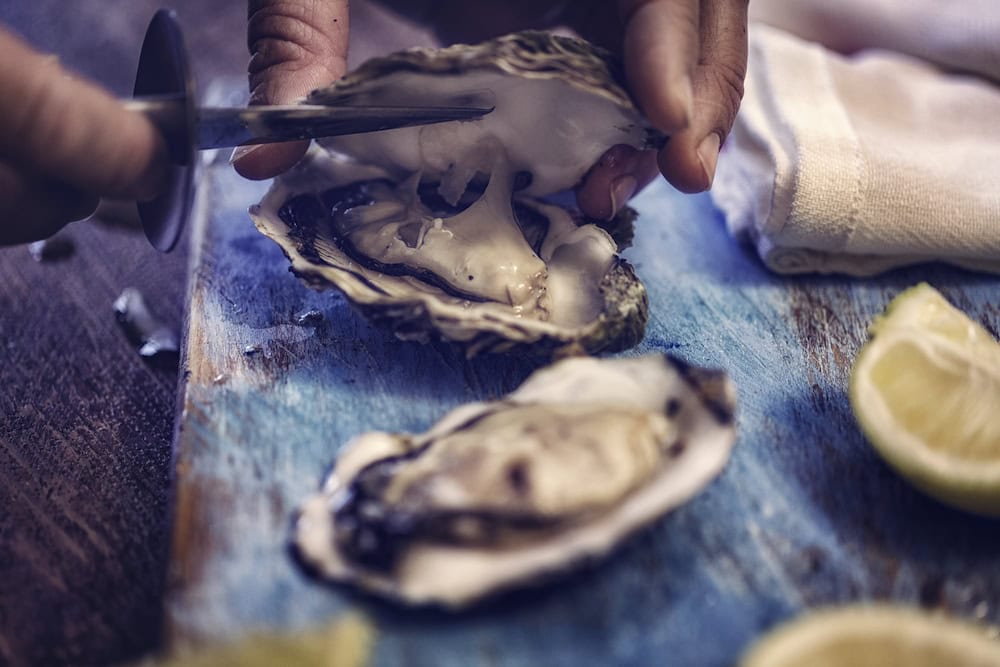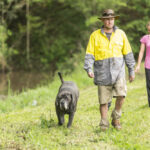Traditionally in Australia, the family farm has been passed on to the next generation. But…
Road to recovery after drought, fires and floods

Fires, floods and drought are natural disasters that farmers and those living in rural and regional areas are well acquainted with. And recovering from disasters is a part of life for many.
But five years of deep drought, which was compounded by the devastating ‘Black Summer’ bushfires that started in northern NSW in late 2019 and then widespread flooding in NSW this year, significantly raised the bar.
The drought hit everyone and every farm to varying degrees. Farmers de-stocked and hand-fed their livestock at great financial, physical and mental cost, while some grain growers didn’t even get the header out of the shed.

Many experienced the trifecta – drought, fire and flood – while others endured the drought and flood combo, which brings huge challenges as drenching rain has nowhere to go when it hits bone-dry ground.
Throw in a mouse plague and a COVID-induced worker shortage and the challenges deepen. But, like much in life, when there is a down there is also an up.
Cattle and lamb prices have gone through the roof, which is great if you are selling – although not so good if you’re buying – and good weather is creating a positive outlook.
Farmers may have a few more lines etched in their faces, but they are pushing on and preparing for what comes next.
A trifecta of challenges
Rob Miller from Milton on the NSW South Coast suffered the trifecta – drought, bushfire and flood – and he says it’s taken 18 months to recover both mentally and physically.
He runs dairy cattle on 2,000 acres at Milton and lost about 150 cows, plus fencing and water infrastructure, when a series of bushfires decimated his property in January 2019.
He says the fires just kept returning as winds changed and temperatures soared beyond 40 degrees.
The drought also left him with no stockfeed and with the fires closing highways it was difficult to have it trucked in, creating another headache.
“The fire hit us four times, and I guess we were too good at firefighting,” Rob says. “We kept holding it back, but because there was still something to burn it just kept setting off again. It’s taken 18 months to really get my mental and physical strength back, and during that time we had three or four floods as well.”
Rob is grateful for the community assistance and the $75,000 NSW Government disaster grant he received.

“BlazeAid were just brilliant, we were the first farm they came to in Milton and they did a great job helping re-build fencing,” he says.
“We also had a group of farmers come up from Deniliquin who helped me pull up all the burnt fencing. I was physically exhausted and quite traumatised, but they just came in and stayed on the farm in our tourist cottages and did the clean-up. There was great help for us.
“A lot of people talk about resilience, but what these disasters tell us is just how fragile we are. Life is fragile, farming is fragile, and under the cost pressures we face today it is nearly enough to break people. We may be resilient and bounce back, but a lot don’t.”
As part of his bounce back, Rob has rebuilt his herd back to 1,000. “The farm is so picture perfect now. We are probably having our best season in 20 years, so it’s a nice change,” he says.
Rob’s other focus is trees. Before the bushfires he had planted thousands of eucalypts and wattles, but after watching them combust in minutes, he is replanting deciduous maples and oaks. “It is a bit against the trend, but it’s what we’re doing,” he says.
Rob and his partner, Carey-Anne Jackson, also supplement their income with an online store called ‘Hunter and Pumpkin’ – named after their two ginger farm cats.

After ferocious floods
If Helen Carrigan, a sheep farmer on the Welbon Plains in northern NSW, could choose she would take drought over floods.
Neither are great options, but Helen says it is easier to proactively de-stock or hand feed where you have some control.
“A flood is different – you can’t control a flood,” Helen said.
When floodwaters transformed their property into an inland ocean in March, Helen and her husband, Chris, had done all they could to save their stock.
“All we can really do is keep our eye on the weather prediction and move stock far away from the creeks to higher ground. Our paddocks are big and the stock have time to move. We just hope not to receive eight or 12 inches of rain in one night. If the wind changes the sheep may walk, ending up boxed up against a fence and trapped,” she said.

Despite their efforts stock losses were high, although they haven’t been able to do a proper headcount as some paddocks have been too wet to access.
In a further blow, the Carrigans’ maiden ewes were lambing as the flood hit.
“We normally join in late November or December and are lambing at the end of May or June, but Chris decided to join our maiden ewes earlier, and so they were lambing in March. This meant they were starting to lamb the night the flood hit,” Helen said.
“Some were heavily pregnant so that was pretty devastating.”
But recovery is happening. “The sun is shining now, surface water has finally dried up, the farm is looking great, and we can move sheep around,” she said.
“We’ve sold wethers at a good price, the sheep and meat market is strong, there is an abundance of pastures, we have lambs on the ground, so there are a lot of positive things happening.

“We appreciate the support available with the NSW Government Flood Recovery Grant, this has made a huge difference in recovery with flood damage as compared to previous years after flooding.”
Things are looking good
At 71 years of age, grazier Kevin Tongue from Loomberah is no stranger to drought.
But he says this drought was “longer and harder” because there was no stockfeed to be found. “In 1964 when I left school, we were in drought, but we were able to get our own feed whereas a couple of years ago we never got the header out of the shed as we had nothing to harvest,” he says.
Kevin runs his farm with his wife Janelle, sons Paul and Ben, and their families. To keep operating during the drought they bought hay and paid $400 a tonne for grain.
“We bought 15 road trains of hay from South Australia, and we had to pay for it before we got it, so we wrote out a cheque for $120,000 and hoped the hay was good,” Kevin says.
“It was a gamble, but it paid off. The people we bought the hay off and the transporters stuck to their word with the price, which was a blessing to us.”

Kevin says that keeping the animals fed was gruelling, but all hands were on deck. “It was constant, we did it every day, for two years. The grandkids were great – they got in and helped, they knew what was going on and what had to be done.”
Now as the recovery and rebuild continues, they are preparing for the next big dry. They’ve built a new 1,000-tonne grain storage shed, cleaned out the dams and are testing a new bore.
So, are things on the up, then? “The canola is in flower and looks a picture. We’ve got barley starting to break head which could be a little bit early with some of these frosts that are about, but we’ve got to run that risk, so it is looking really good,” Kevin says.
Not taking things for granted in Bega
Cattle drifting down flooded rivers was a common sight on TV screens earlier this year, and this was the reality for Raymond Grant when 24 of his 36 Black Angus cows were swept away.
Knowing the flood was coming Raymond had moved his herd to a neighbouring property, but when the Bega River rose five metres in one and a half hours, his plan unravelled.
“By the time I got over there the water was up to their bellies and it was moving so fast. They started to go down and I was following them in water up to my armpits trying to get them to cross over,” he says.
“Then I dropped under a couple of times, and I thought ‘I think I’d better get out of here’. It was about 8pm and pitch dark.”
The next day 16 of Raymond’s cows were found loitering in town. Two days later four more showed up three kilometres downstream, and then after that two more were recovered nine kilometres away after a very long swim.

Two were never found and are presumed to have been washed out to sea. “I hadn’t seen a flood like that before, but I’ve only been doing this for five years,” Raymond says. We’ve been in drought since I started, then we had horrendous fires and then the flood.”
Getting back on track hasn’t been easy with kilometres of fencing down and still needing repair. “There was also a lot of debris scattered everywhere. Everything gets washed down the river, and when it comes up that high it takes everything – pieces of tin, board, whatever is in its way.”
NSW Farmers supports oyster industry
To help the oyster industry recover from bushfires, flooding and COVID-19, NSW Farmers is rolling out three NSW Government-funded projects.
Professionalising the oyster industry
Through the ‘Responsible Oyster Farming Program’ oyster farmers can up-skill by completing a series of short online or face-to-face modules which are aligned with industry code of practice. After each module is completed, farmers can then apply for funds to implement the recommendations they have learned about.
Marketing NSW oysters
This consumer marketing campaign is about boosting oyster sales after drought, fires, floods and COVID-19, which meant many farmers missed the peak summer and Easter sales periods. It dovetails with a Seafood Industry Australia campaign and involves NSW Farmers, OceanWatch and Sapphire Coast Wilderness Oysters working together to produce posters, recipe cards, tray labels and social media posts to promote oysters over the next 18 months.

Real-time water monitoring
Environmental monitoring in 13 NSW estuaries by the Food Agility CRC and its partners is already showing that real-time data may increase the number of harvest days for oyster farmers.
If you enjoyed this feature on farmers recovering from disasters, you might want to read our feature on farmers on the frontline of crime.








